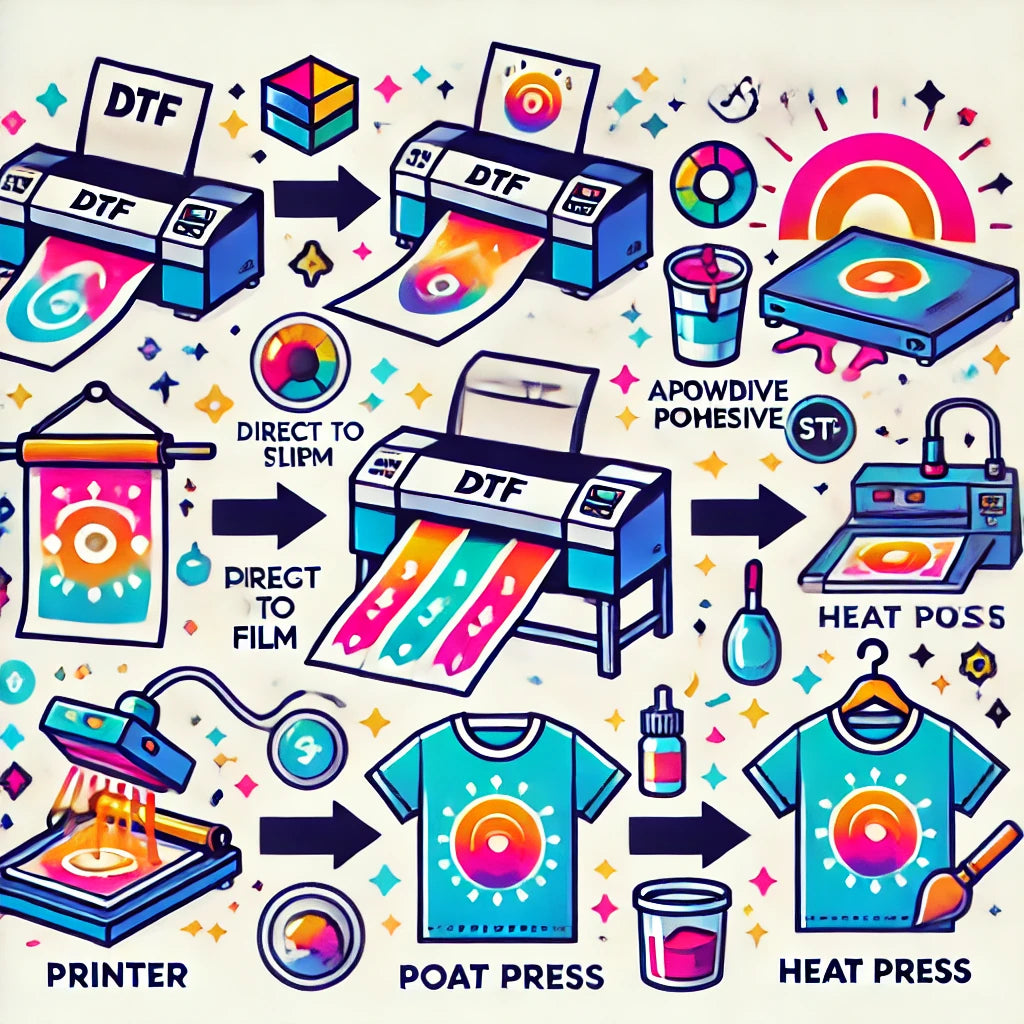
DTF Printing Process
Share
The DTF (Direct To Film) printing process involves several steps to transfer a design from a digital file onto various surfaces, including fabric and hard materials. Here is an overview of the DTF printing process:
-
Design Preparation: The process begins with the creation or selection of a digital design. This design can be in the form of a vector file or a high-resolution image. The design is then imported into a computer.
-
Printing on Film: The digital design is printed onto a transparent or semi-transparent film using a DTF printer. This printer is specially designed for DTF printing and uses DTF-compatible inks. The printer precisely reproduces the design onto the film with high resolution and color accuracy.
-
Film Handling: After printing, the film is carefully handled. In some cases, a powder adhesive layer may be applied on top of the printed design. This adhesive helps the ink adhere properly to the target surface.
-
Heat Transfer: The prepared film is placed face down onto the fabric or surface that is to be printed. This assembly is then inserted into a heat press machine. The heat press machine applies heat and pressure to the film and the surface. This process causes the ink on the film to sublimate and bond with the target material.
-
Cooling: After the heat transfer is complete, the printed item is allowed to cool down. This cooling process helps set the ink and ensures that it adheres firmly to the surface.
-
Film Removal: Once the item has cooled, the excess film and any remaining powder adhesive are removed. What remains is the transferred design on the fabric or surface.
-
Finishing: Depending on the specific application, additional steps may be involved, such as curing the print with additional heat or performing post-processing steps to enhance the design's appearance and durability.
The result of the DTF printing process is a high-quality, full-color print that adheres well to the material, whether it's clothing, textiles, ceramics, wood, or other surfaces. DTF printing is known for its ability to produce detailed and intricate designs with a wide color gamut, making it a versatile and popular choice for various customization and branding needs. It is particularly advantageous for short runs and one-off custom orders due to its cost-effectiveness and efficiency.
